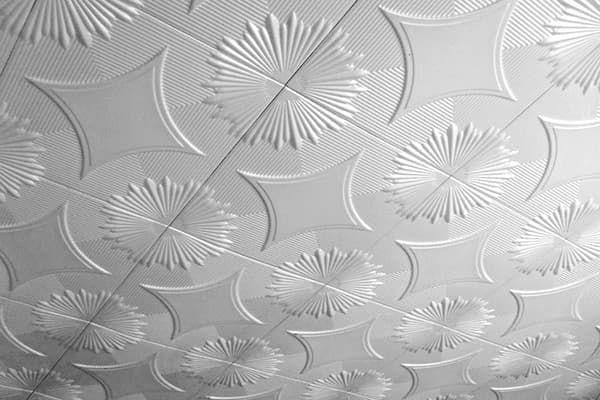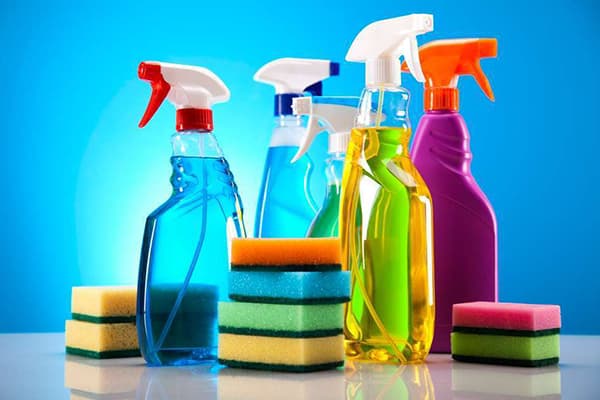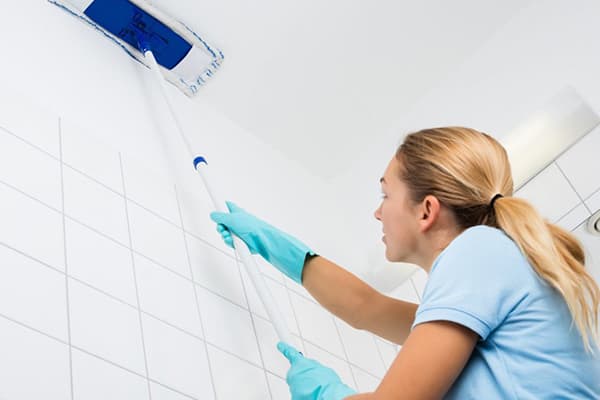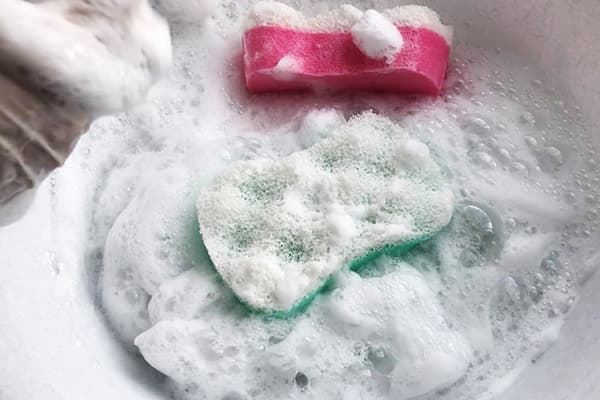Is it possible to wash the ceiling tiles from polystyrene or repair the end?
Content:
Contrary to the fears of many housewives, you can wash the ceiling tiles. And even necessary, because dust, soot and small particles of fat settle on it, and it also absorbs unpleasant odors.
Types of Shelf Tiles
There are three types of foam plates. They all differ in thickness and density, so before you start cleaning you need to find out what exactly the ceiling is glued to.
- Stamped tile
Its cheapness is fully consistent with quality. Due to the too porous structure, such a finishing material actively attracts dirt and is difficult to clean. This is not the best option for decorating the kitchen, where they regularly cook a lot, since pollution will have to be wiped off at least twice a week.
Bringing stamped tiles in order is complicated by the fact that it strongly absorbs moisture, and frequent wetting leads to the destruction of the material. To avoid trouble, remove dust and the most noticeable spots with the dry method, and then wipe the surface with a well-wrung sponge.
- Extruded tile
Thanks to the water-repellent layer deposited on the front side, it is easy to clean it from various kinds of contaminants. You can wash the ceiling tiles with wet microfiber, but do not rub the abrasive side of the sponge and hard brushes with an effort, as this violates the integrity of the protective coating.
- Injection tile
The easiest to care: does not absorb water and is very resistant to mechanical damage. Grease and soot, which are invariably present in the kitchen, are easily removed from its surface both mechanically and chemically.
Detergents
Find in the store a special tool for washing the ceiling tiles will not succeed, so you can use the usual household chemicals:
- dishwashing liquid;
- washing gel;
- laundry soap solution;
- cheap shampoo without keratin and oils.
It is strongly not recommended to use washing or cleaning powder, as well as products containing acid, chlorine and other aggressive components for washing ceiling tiles.
Stain fighting
To remove local contaminants, such as traces of flies or stubborn soot, you can rub them with a white eraser (color can leave streaks on a light tile).
Old fat can be dissolved with vinegar essence. To do this, it is poured onto a white cotton cloth and applied to the stain for several minutes. If the effect is not very pronounced, the procedure is repeated 2-3 times. Ammonia has a similar effect.
Splashes of fruit and vegetable juice become less noticeable if you rub them with a rag soaked in a strong salt solution (about 100 g per half liter of hot water).
Traces of wine and blood can be destroyed only with a special spray to remove biological stains.
It is impossible to act on the foam tile with acetone or gasoline, since they dissolve both the pollution and the material.
Sequencing
Before cleaning, the entire surface of the ceiling should be vacuumed. If this is not done, black stains will be added to the existing pollution. In the absence of a vacuum cleaner, you can sweep away the dust with a Duster brush or a whisk with a soft long pile.
You also need to prepare the necessary tools:
- clean rags made of soft, lint-free cloth or special dry wipes for cleaning;
- a new dishwashing sponge;
- capacity for soap solution;
- not very stiff brush;
- paper towels;
- putty knife (it will come in handy if after repair on the kitchen ceiling there are bursts of putty or glue);
- stepladder.
Rules for washing ceiling tiles
If the stamped tiles are to be cleaned, detergent is poured into a bucket or basin of water and whipped until a layer of thick and dense foam appears on the surface. It is she who is applied to the ceiling with a dry sponge. Then the surface is wiped with a damp but well wrung sponge.
In case of accidental water ingress on the foam, immediately wet the wet spot with a paper towel.
A solution of laundry soap is used only when washing waterproof types of tiles. Before using aggressive chemicals (for example, vinegar essence) make a trial application on the part of the ceiling where the likely damage will be the least noticeable.
Safety precautions
Since you will have to work at a height and with your head raised up, you need to take care of your own safety.
- So that detergents and dust do not get into your eyes, you will need glasses (if there are no protective ones, ordinary ones from the sun will do).
- Rubber gloves protect your skin from contact with caustic substances.
- Shoes should have a back and tightly wrap around the foot, and a rubber grooved sole will help avoid falling from the stepladder.
An apron or a dressing gown with large pockets will not only keep the clothes clean, but also allow you to have all the cleaning tools with you, which will greatly speed up the work.



